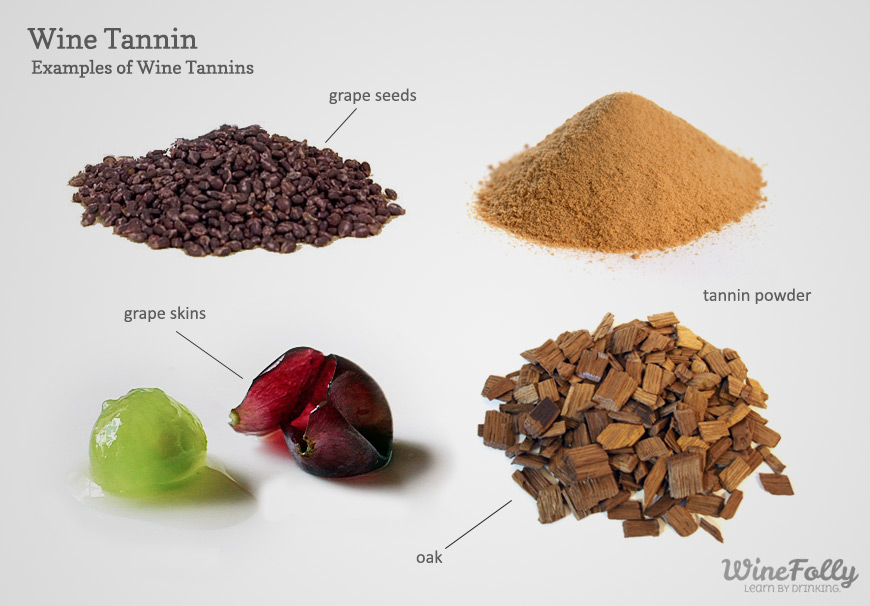
What are “invisible Tannins”?
I recently received a review for our 2014 Turtle Vines Pinot Noir …yes, we are announcing the release of that wine in the next few days!!! In the review was the term “Invisible Tannins”. A few years ago I taught my nephew “Young but Approachable”. This one is not as funny, but I think is a great term, and in my mind another way to say “balanced with great structure”. Below is the explanation I got below from the Prince of Pinot.
First…a quick explanation of a wine tannin. Tannin is a naturally occurring polyphenol found in plants, seeds, bark, wood, leaves and fruit skins. (see above picture) As a characteristic of wine, tannin adds both bitterness and astringency as well as complexity. Wine tannins are most commonly found in red wine, although white wines have tannin from being aged in wooden barrels or with oak adjuncts.
Prince of Pinot – “You want some tannic backbone in wine not only for balance but for age ability. That said, you want to sense that a wine has structure, but you don’t want the structure (tannins) to stand out. Tannins should blend harmoniously with the fruit extraction, alcohol, acidity and oak – essentially invisible in the context of the wine as a whole or better said, balanced. Tannins will change over time in the bottle, so they may stand out a bit in a young wine and that is ok if they are not big tannins. I am sure you have experienced opening a wine and finding it a bit tannic, but when re-tasted 2-3 days later from the same bottle, the tannins have softened and seemingly integrated. That is a sign that the tannins will meld over time in the bottle in the cellar.”
Lastly, in order to make a balanced wine you need to take into account the acidity and alcohol content to determine how much tannin is needed. In general, the higher the alcohol and lower the acid the more tannins you will need. That is why Cabernet and Merlot will have more tannins than Pinot Noir.